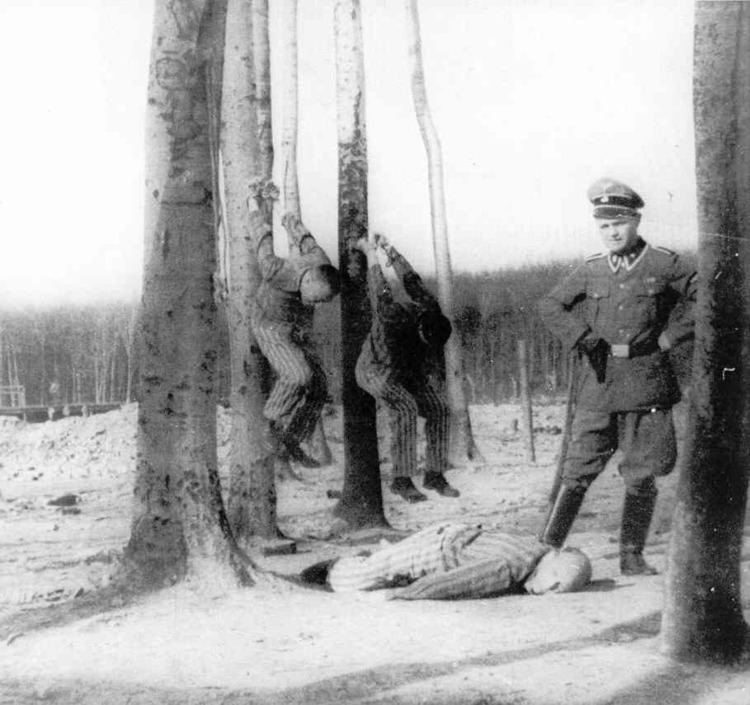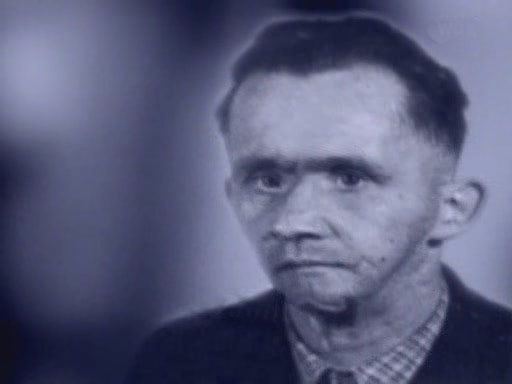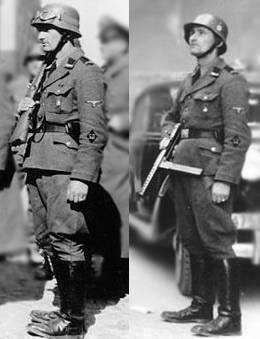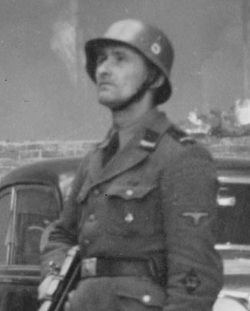Rank Rottenfuhrer | Years of service 1938–1945 Name Josef Blosche | |
 | ||
Died 29 July 1969(1969-07-29) (aged 57)Leipzig, East Germany | ||
Josef Blösche (12 February 1912 – 29 July 1969) was a member of the Nazi Party who served in the SS and SD during World War II. Blösche became known to the world as a symbol of the Nazi cruelty inflicted on people within the Warsaw ghetto because of a famous photograph taken during the Warsaw Ghetto Uprising which portrays a surrendering little boy (possibly Tsvi C. Nussbaum) in the foreground, and Blösche as the SS man who is facing the boy with an sub-machine gun in hand.
Contents
- Execution of Josef Blsche Extremely Sadistic Nazi Butcher of Warsaw Ghetto His Bestial Crimes
- World War II
- Trial and conviction
- References

Execution of Josef Blösche - Extremely Sadistic Nazi Butcher of Warsaw Ghetto & His Bestial Crimes
World War II

Blösche spent his early life working as a farmhand and as a waiter at his father's hotel. He joined the Nazi Party and the SS in 1938, after Adolf Hitler's Germany annexed the Sudetenland. After serving in Warsaw with the SS from March 1940 onwards, he joined the Security Service Sicherheitsdienst (SD) division of the SS. He served in the SD's Warsaw ghetto outpost in mid-1942, when the mass deportation to the Treblinka extermination camp began. Blösche received the German War Merit Cross for his actions during the suppression of the Warsaw Ghetto Uprising.

In May 1945, he surrendered to the Red Army and became a prisoner of war of the Soviet Union. Blösche was sent to a camp administered by GUPVI (Main Administration for Affairs of Prisoners of War and Internees) shortly thereafter. In early 1946, he was repatriated to East Germany, still as an internee. In August 1946 he suffered a major accident at work, leaving the side of his face severely deformed. In 1947 his labour camp was dissolved, and Blösche was released. He returned to where his parents dwelled and lived quietly. His facial scars protected him from discovery as the SS soldiers were pictured in the photos of the Warsaw ghetto. He began living a normal life, was married, and had two children.
Trial and conviction

In 1961, a former SS acquaintance who was on trial in Hamburg, linked Blösche to the atrocities he had committed in Warsaw. Further investigation by the East German police led to a series of findings resulting in his identification and arrest in January 1967.

Blösche was put on trial in Erfurt in April 1969. He was found guilty, including in participating in the shooting of about 1,000 Jews in 1943. The Jews gave him the nickname "Frankenstein" for raping and then killing women in the ghetto. Together with other SS men, he would go on expeditions in the ghetto and shoot random Jews to terrorize the residents. He was sentenced to death, and executed in Leipzig on 29 July 1969, by a shot through the neck.

